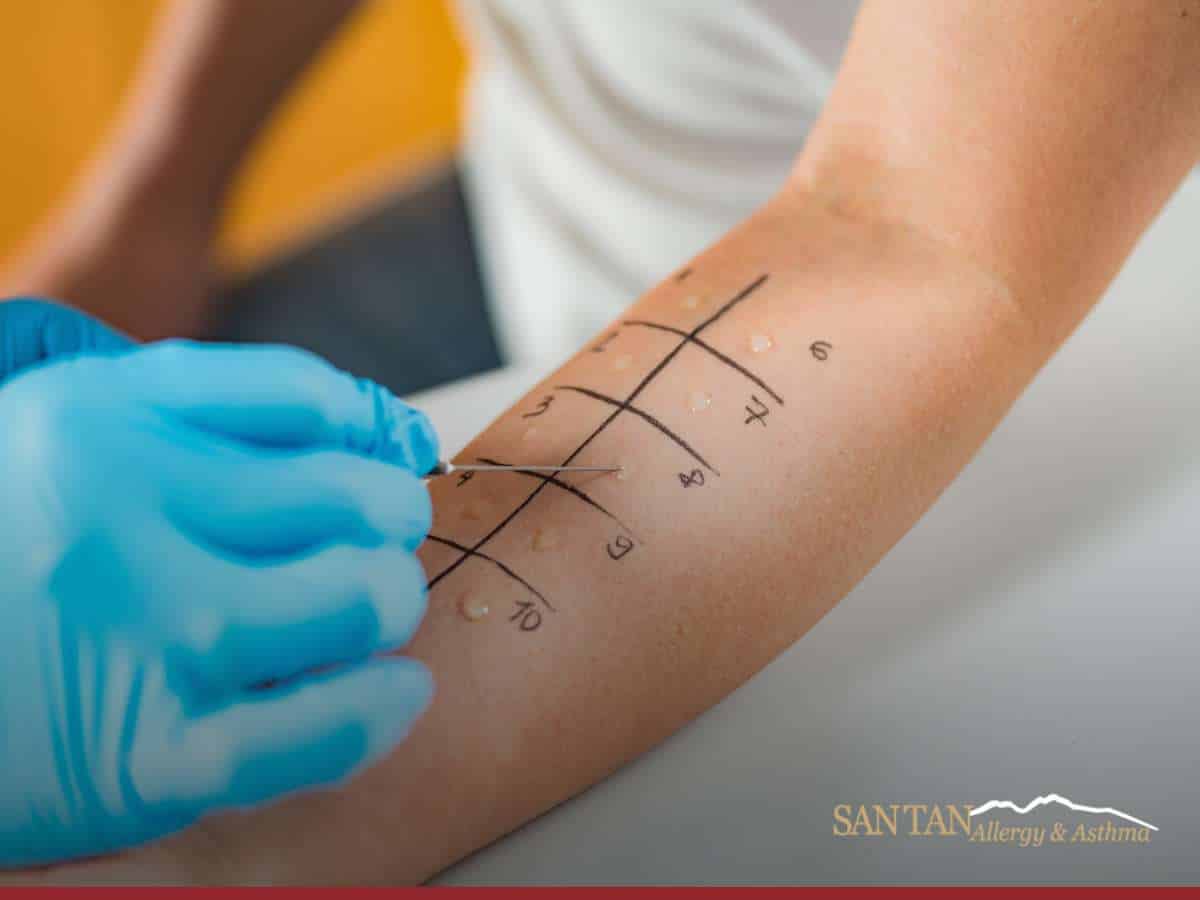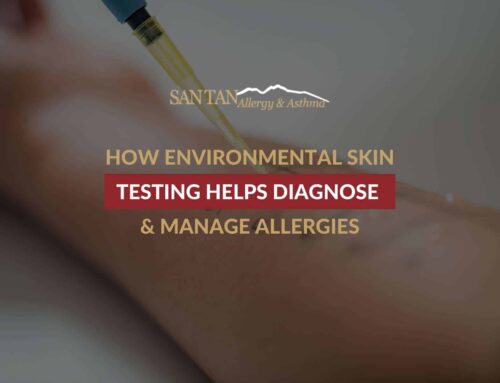How Allergy Skin Tests Work, What Results Mean & When Doctors Recommend Each
Have you ever wondered why some allergy tests require a skin prick instead of a patch test? Both tests are valid, but each one has different pros and cons, and understanding their differences can make the allergy diagnosis feel much clearer. While skin patches are convenient because they don’t need medical presence, skin pricks are still more accurate because the doctor has better control over where the needle goes. But that’s just one of their many differences.
In the following guide, we’ll break down how each test works, how the results are interpreted, and when an allergy expert might recommend one over the other. Keep reading to learn all the details.

Why Is Skin Testing Important For Allergies?
Skin testing is the fastest method to diagnose allergies. Your allergy doctor can do many skin tests for allergies while closely watching them. Once the results are available, your doctor can create a treatment strategy that lowers the chance of an allergic reaction.
Skin prick and skin patch tests are the two most common methods of allergy skin testing.
What Is a Skin Prick Test?
Skin prick tests are necessary to detect allergic reactions to food, pollen, mold, and pet dander. By observing skin reactions, this test seeks to determine the level of immunoglobulin E (IgE) antibodies. Substances suspected of triggering allergic reactions —potentially up to 50 allergens— are applied to the forearm or back, and the doctor uses a needle to puncture the skin beneath.
A red and itchy hive may develop on the skin soon after the doctor injects the chemical. Your reaction proves you have an allergy to the substance.
Keep in mind that the allergist will test you for several allergens while keeping an eye out for symptoms of an allergic skin reaction. Allergy doctors in Queen Creek are the only professionals who can perform skin prick tests with a physician to prove if you’re allergic to something.
What Is a Skin Patch Test?
The skin patch test is an allergy test used to detect specific chemicals that cause contact dermatitis (i.e., skin irritation or inflammation due to contact). Patch testing is the only technique to detect the exact irritating component if you have recently suffered from dermatitis or eczema.
Contrary to skin prick tests, a skin patch test focuses on reactions to contact allergens on the skin rather than to food or airborne allergens. Contrary to skin prick tests that offer immediate findings, skin patch tests results can take between 48 and 96 hours.
Usually, two to three office visits are necessary for this allergy test. Your allergist will administer 20 or more chemicals during the initial appointment in little patches to the skin of your arm or upper back for 48 hours.
After that, you must avoid taking a bath, going swimming, and engaging in other activities that make you sweat during that period. On your second visit, the doctor takes the patches off, and your skin is checked for allergic reactions to identify the allergens causing your dermatitis. Your allergist in Gilbert may occasionally ask you to return a few days later to check for any delayed reactions.
Key Differences Between Skin Prick & Skin Patch Tests
Skin prick and skin patch tests are not the same because they detect different types of allergic reactions. A skin prick test identifies immediate, IgE-mediated allergies, which typically appear within minutes. These reactions are quite common in seasonal allergies, asthma, and food sensitivities.
Contrary to that, skin patch tests evaluate only delayed reactions that can take 48 to 72 hours to show, making it the preferred method for diagnosing any type of contact dermatitis.
The way each test is performed is also different. A skin prick test uses tiny, shallow pricks on the forearm or upper arm to introduce small amounts of allergens, making the results visible during the same appointment.
As for skin patch tests, they rely on adhesive panels placed on the back, which must remain undisturbed for several days and require multiple follow-up checks.
Here’s how you can differentiate each of them:
Skin Prick Test:
- Detects immediate allergic reactions (IgE-mediated)
- Results appear within 15–20 minutes
- Commonly used for pollen, dust mites, pets, molds, and certain foods
- Performed on the forearm or upper arm
- Typically completed in a single visit
Skin Patch Test:
- Detects delayed allergic reactions (contact dermatitis)
- Requires 48–72 hours for results to fully develop
- Used for metals, fragrances, preservatives, and chemical sensitizers
- Applied on the back using adhesive patches
- Requires multiple visits for placement and reading
Both tests offer a complete picture of how the body reacts to different triggers, but their purposes differ, so you must be wise about their characteristics before scheduling a visit to the allergy clinic.
Which Allergy Test Is Right For You?
Choosing between a skin prick test and a skin patch test depends on the type of symptoms regarding the allergy, how quickly they appear, and what kinds of triggers seem to cause them. As we mentioned before, each method was designed to detect a different immune response, so the right choice often becomes clearer once you understand the pattern of your symptoms.
A skin prick test is usually the best option if the reactions happen fast and include symptoms like sneezing, itchy eyes, hives, wheezing, or swelling. Skin patches are more appropriate when the issue involves rashes or irritation that develops slowly, which is why they’re a good alternative for conditions like contact dermatitis.
Some situations may require both tests. For example, persistent skin issues combined with respiratory symptoms might suggest different types of allergies are at play.
In general, the right test comes down to:
- The timing of symptoms (immediate vs. delayed)
- The type of reaction (respiratory, skin irritation, or food-related)
- Your daily exposure to potential allergens
- Whether contact-based triggers are suspected
What To Expect Before, During & After Testing
Before The Test
Your primary doctor can refer you to an allergist or dermatologist for additional testing if they think you might have an allergy. The allergist will request medical and lifestyle history, including details about current and prior ailments, your place of residence and employment, and your eating habits.
To get more reliable test results, your allergist may also advise you to stop using certain medications before the test.
During The Test
Here’s what you can expect during each of the tests:
- Skin Prick Test: The allergist will apply tiny drops of allergens on the forearm or upper arm, followed by a quick, shallow prick to allow each substance to lightly enter the skin. The process is not typically painful, and reactions appear within 15 to 20 minutes. You’ll remain in the office while the provider evaluates any raised bumps or redness.
- Skin Patch Test: The allergist will place adhesive patches containing specific substances on your back. These patches must stay in place for 48 to 72 hours, meaning you’ll avoid showering, sweating heavily, or activities that could shift the panels. A follow-up visit is required to remove the patches and assess early reactions, with another reading usually done a day or two later.
After The Test
Once the results are ready, the provider will explain what each reaction means and how it connects to your symptoms. Mild itching or redness may linger for a short time after a skin prick test, while patch test markings can remain slightly irritated for a few days. After-care may include soothing creams, avoidance strategies, or further evaluation depending on the findings.
How To Interpret Allergy Test Results Effectively
A negative test result indicates that you experienced no skin changes in reaction to the allergens. A positive test result is characterized by an itchy, red, raised welt, indicating that you are sensitive to the compound. If the test is inconclusive, your doctor can decide to try another kind of allergy test.
Get In Touch With Gilbert Allergy Doctors
It is crucial to receive a proper diagnosis if you experience any kind of allergy. Contact San Tan Allergy & Asthma today, allergy doctors In Gilbert, to schedule an appointment and obtain the best attention to understand your condition and find the best treatment for it.

San Tan Allergy & Asthma
4915 E Baseline Rd #112
Gilbert, AZ 85234
Phone: 480-626-6600
Email: officemanager@santanallergy.com
Website: https://santanallergy.com/







